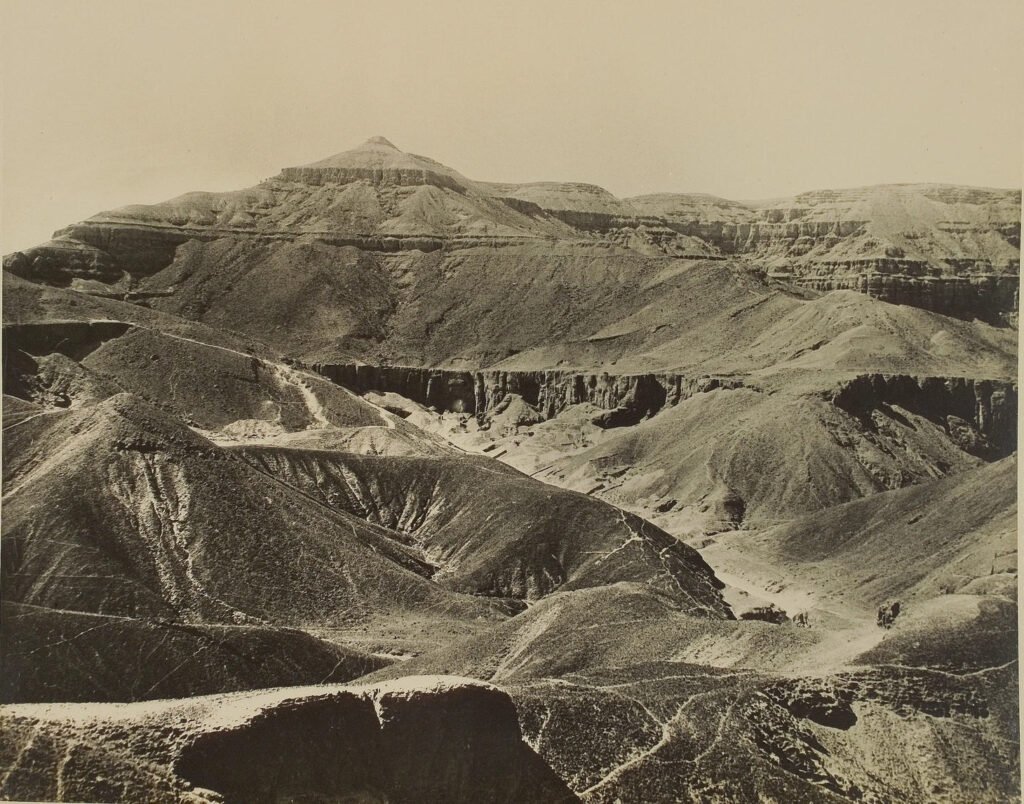The Valley of the Queens: A Hidden Gem of Ancient Egypt
The Valley of the Queens, located near Luxor on the Nile’s west bank, is a fascinating yet often-overlooked site. It served as the resting place for queens, princes, and noble members of Egypt’s royal families. Furthermore, this valley stands as a testament to the deep reverence Egyptians had for their royal women.The site may not have the same fame as the Valley of the Kings, but it is no less significant in terms of its history, artistry, and architecture.
A Sacred Burial Ground for Royal Women

Ancient Egyptians called the Valley of the Queens “Ta-Set-Neferu,” meaning “The Place of Beauty.” During the New Kingdom period, they used it as a royal necropolis, especially for queens of the 18th, 19th, and 20th Dynasties (1550–1070 BCE). They chose this secluded location for its natural protection offered by surrounding hills.
Unlike earlier dynasties, which built grand pyramid tombs, Egyptians in this era hid queens in rock-cut tombs designed to stay hidden from robbers. They intricately decorated these tombs with scenes reflecting each queen’s divine status and journey to the afterlife.
The Tomb of Queen Nefertari: The Jewel of the Valley

The most famous tomb in the Valley of the Queens belongs to Queen Nefertari, the beloved wife of Ramses II. Often called the “Sistine Chapel of Ancient Egypt,” it is one of Egypt’s most beautiful tombs. Moreover, its walls are adorned with vibrant paintings showing Nefertari’s journey through the underworld, guided by afterlife gods. Alongside these images are inscriptions from the “Book of the Dead,” which aim to protect the queen and ensure her safe passage into the afterlife.
Other Significant Tombs in the Valley

While Queen Nefertari’s tomb is undoubtedly the most famous, the Valley of the Queens is home to over 90 tombs, many of which belonged to the sons, daughters, and lesser-known wives of pharaohs. Among these, the tombs of the princes Amun-her-khepeshef and Khaemwaset, sons of Ramses III, are notable for their detailed wall paintings depicting scenes of their lives and the afterlife.
The tombs in the Valley of the Queens vary in size and complexity, but they all share a common theme of honoring the deceased’s divine status and ensuring their protection in the afterlife. The inscriptions and artwork reflect the same religious beliefs and iconography found in the Valley of the Kings, with a focus on the gods Osiris, Anubis, and Hathor.
Architecture and Design

The tombs in the Valley of the Queens served both functional and symbolic purposes. Carved into the limestone hills, they aimed to protect queens’ remains and treasures from robbers and harsh desert conditions. Typically, each tomb has a sloping corridor leading to a burial chamber, with smaller rooms branching off.
Moreover, these walls are richly adorned with hieroglyphs, carvings, and frescoes depicting religious ceremonies and offerings to the gods. Many scenes depict the queen’s or prince’s journey to the afterlife, highlighting their trials and rewards.
Preserving the Legacy

Like many ancient sites, the Valley of the Queens has faced challenges over the millennia, including looting, natural decay, and environmental damage. However, extensive restoration efforts have helped preserve many of the tombs, ensuring that future generations can appreciate their beauty and historical significance.
The most delicate tombs, such as Nefertari’s, are subject to strict conservation efforts, with limited access to minimize damage from moisture, heat, and light. These preservation efforts are crucial in maintaining the incredible detail and vibrant colors of the tombs’ artwork.
A Journey into Egypt’s Royal Past

The Valley of the Queens offers a unique glimpse into the lives and afterlives of Egypt’s royal women. This site offers profound beauty and deep historical significance. It provides an intimate view of ancient Egyptian burial practices. Travelers can explore a quieter alternative to the nearby Valley of the Kings while still experiencing Egypt’s royal past.
Whether you’re drawn to Nefertari’s stunning tomb or other queens’ tombs, the Valley of the Queens is a must-visit. Explore this hidden gem and uncover the legacies of Egypt’s royal women.
Conclusion: Embark on a Royal Journey
For travellers eager to experience Egypt’s ancient wonders, the Valley of the Queens offers a richly rewarding journey through time. Additionally, we, Odysseys Voyage, provide diverse travel packages to this historic site. So, immerse yourself in the beauty and mystery of the Valley of the Queens on your next Egyptian adventure!





















